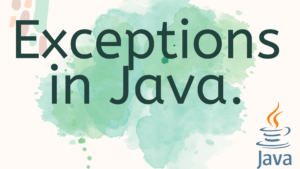Introduction:
In the realm of Java programming, understanding the importance and functionality of the finally block in Java is crucial for writing robust and reliable code. This often overlooked but powerful construct plays a pivotal role in exception handling, resource management, and ensuring the execution of essential code regardless of the outcome of try-catch blocks.
Table of Finally Block in Java
What is the Finally Block in Java?
The finally block in Java is a fundamental part of Java’s exception handling mechanism. It allows developers to define a set of statements that will be executed whether an exception is thrown or not. This ensures that critical operations, such as closing files or releasing resources, are always performed, promoting code integrity and reliability.
Key Characteristics of the Finally Block in Java:
Execution Guarantee:
The finally block in Java guarantees execution, irrespective of whether an exception occurs within the corresponding try block or not. This makes it an ideal place for releasing resources that must be closed or cleaned up.
Always Paired with Try-Catch:
The finally block in Java is always used in conjunction with a try block. This combination allows developers to handle exceptions gracefully while ensuring necessary cleanup operations are performed.
Why Use the Finally Block in Java?
Exception Handling:
In Java, exceptions are a part of the programming landscape. The finally block ensures that critical code is not bypassed, even in the presence of exceptions. Let’s consider an example:
try {
// Code that could potentially result in an exception
} catch (Exception e) {
// Exception handling code
} finally {
// Code to be executed regardless of an exception
}
In this scenario, the finally block will be executed whether an exception is caught or not, providing a robust approach to handle unexpected situations.
Resource Management:
The finally block is indispensable when dealing with resource management, such as closing files, database connections, or network sockets. Failing to release these resources properly can lead to memory leaks and other critical issues. Here’s an example:
FileReader fileReader = null;
try {
fileReader = new FileReader("example.txt");
// Code for reading from the file
} catch (IOException e) {
// Exception handling code
} finally {
// Ensure the FileReader is always closed
if (fileReader != null) {
try {
fileReader.close();
} catch (IOException e) {
// Handle the exception if closing fails
}
}
}
By placing the resource cleanup code in the finally block, you guarantee that it will be executed, regardless of whether an exception occurred or not.
Types of Finally Blocks in Java:
Simple Finally Block:
The most common type of finally block contains the essential code that must be executed. For example:
try {
// Code susceptible to triggering an exception
} finally {
// Code to be executed regardless of an exception
}
Nested Finally Blocks:
Java allows nesting of try-catch and try-finally blocks. This can be useful in complex scenarios where different levels of exception handling or resource cleanup are required.
try {
try {
// Nested try block
} finally {
// Code to be executed in the inner finally block
}
} finally {
// Code to be executed in the outer finally block
}
Examples of Finally Block in Java:
Example 1: Exception Handling
public class FinallyExample {
public static void main(String[] args) {
try {
// Code that might lead to an exception
int result = 10 / 0;
} catch (ArithmeticException e) {
// Exception handling code
System.out.println("An arithmetic exception occurred.");
} finally {
// Code to be executed regardless of an exception
System.out.println("Finally block executed.");
}
}
}
In this example, the finally block ensures that the cleanup code is executed, even if an arithmetic exception occurs.
Example 2: Resource Management
public class FileExample {
public static void main(String[] args) {
FileReader fileReader = null;
try {
fileReader = new FileReader("example.txt");
// Code for retrieving information from the file
} catch (IOException e) {
// Exception handling code
System.out.println("An IO exception occurred.");
} finally {
// Ensure the FileReader is always closed
if (fileReader != null) {
try {
fileReader.close();
} catch (IOException e) {
// Handle the exception if closing fails
System.out.println("Error closing the file.");
}
}
}
}
}
In this example, the finally block guarantees that the file reader is closed, regardless of whether an IO exception occurs.
Mastering the finally block is essential for writing robust Java code. Its ability to ensure the execution of critical code, handle exceptions gracefully, and manage resources effectively makes it a powerful tool in a developer’s arsenal. By incorporating finally blocks strategically, you can enhance the reliability and maintainability of your Java applications. So, the next time you write code that involves potential exceptions or resource management, remember the power of the finally block and wield it wisely for resilient and dependable software.



